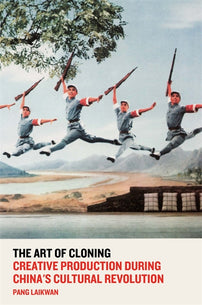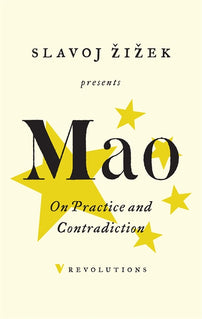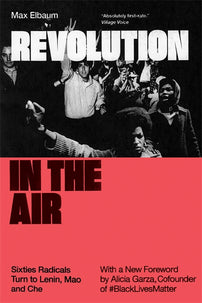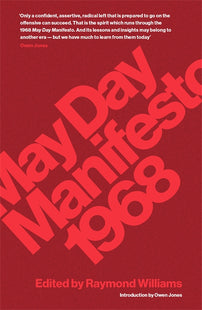A Hidden Struggle: China's Cultural Revolution in 1968
China's Cultural Revolution was a key reference point for huge numbers of activists in 1968, but by then the CR was all but over.
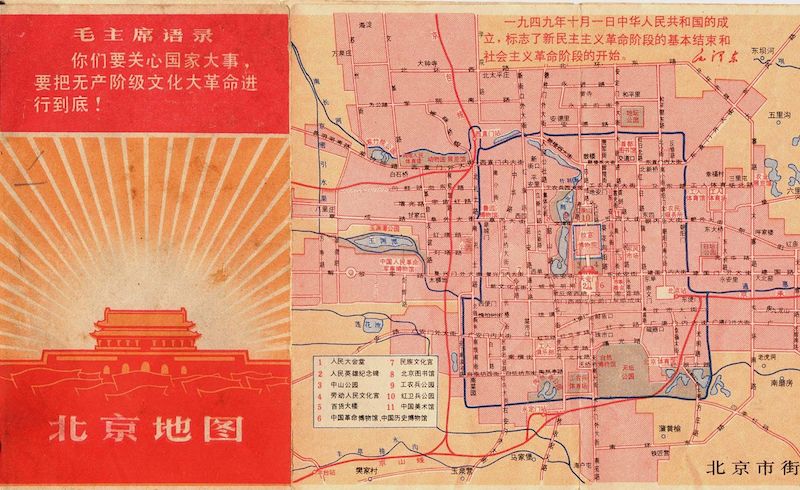
China's Cultural Revolution (CR) was a key reference point for huge numbers of activists in 1968 — not just in the West, but much of the Global South too, especially India. The Red Guards seemed to be part of the world-wide revolt against the old system, with the added bonus that they were supported from the top. Mao's injunction that "It is right to rebel" and insistence on the need for a constant struggle against the revolution degenerating provided a dynamic alternative to the grey bureaucracy of the Russian system. And the appeal of Mao's "Little Red Book" was such that Huey Newton and Bobby Seale would famously kick-start the Black Panther Party by selling copies to Berkeley students: "We bought out all the Red Books, paying thirty cents for them. We made a deal with the bookstore...and the next thing I knew, we had enough money to buy two shotguns." 1
The Reality of the Cultural Revolution
The reality was very different — by 1968 the CR was all but over. Mao had launched a street movement in 1966 to win a battle inside the Chinese Communist party (CCP) leadership, but it rapidly spun out of control. The call to challenge authority was especially strong for students, and tens of millions flooded into the Red Guard organisations.
But they did so with their own interests at heart, as Nigel Harris noted: "The students were for 'revolution,' but for the emancipation of people rather than productive forces. Indeed, many of them supported Mao in order to fight the social obsession with accumulation, the tyrannical work discipline made necessary by that obsession...Now at last they were given an opportunity to torment their tormentors, the local instruments of the national plan, teachers, headmasters, professors. They were the tangible 'persons in authority taking the capitalist road', and any form of discipline must resemble capitalism." 2 At the onset, when Mao gave them their heads, it was utterly exhilarating — or terrifying, if you were one of their targets.
But once the students went beyond the schools and colleges to take on the bureaucrats who ran the cities or the provinces, the bureaucrats fought back, organising their own Red Guard units among workers to take on the students. This led to huge street battles in many cities, but also provided workers with opportunities to assert their own interests.
The winter of 1966-67 saw a wave of strikes, most concentrated in Shanghai but spreading to industrial workers across the country. As Livio Maitan wrote: "The objectives of this movement were clearly both economic and political in character...in these [economic] demands and others that were raised there was also a clearly detectable drive for an undiluted workers' power within the factory and in the various organs of government...and sought to link up these actions on a local and even national scale." 3
As the faction multiplied, the conflicts between them worsened, and 1967 also saw armed battles taking place in cities across China. In the southwestern city of Chongqing, a harbour district on the Yangzi River was "razed to the ground in a battle that saw the use of tanks, mobile artillery pieces and anti-aircraft guns." 4 The factional violence, and the consequent disruption to industry, forced Mao to try to rein the movement back. With both the CCP and state bureaucracy broken, the only force he could rely on to restore order was the army, which had also been skirmishing with Red Guards throughout 1967, with increasingly fatal results.
But the army itself was deeply divided, with the central command in Beijing dominated by supporters of Lin Biao, who wanted the CR to continue, while the powerful regional commanders were closely tied to the old guard in the bureaucracy, and saw their primary job as restoring order.
Ending the Cultural Revolution
1968 opened with major fighting in the southern province of Guangzhou and the neighbouring province of Guangxi, where factional fighting would culminate in May with the army flattening much of the town of Wuzhou and carrying out mass executions. 5 Although street fighting continued in other parts of China, control was gradually being reimposed with the setting up of "revolutionary committees" to run provinces. These took in a few token leaders from Red Guard and other rebel groups, but they were run by a combination of military commanders and old bureaucrats.
In Beijing, factional conflict at the heart of the CCP ebbed and flowed, with both members of the old guard and those who had risen through the CR suddenly finding themselves disgraced. Simon Leys described this phase of the CR in The Chairman’s New Clothes (much the best contemporary account of the CR) as "a hidden struggle in which the masses have played no part and of which they could know nothing." 6
In July, Mao intervened decisively to bring the CR to a close. This led to one of the most murderous purges since 1949, the ominously-named "campaign to cleanse class ranks." Hundreds of thousands were put to death, often after horrific torture, while millions more were arrested or lost their jobs. In Inner Mongolia, almost 800,000 people were persecuted for their supposed membership of a wholly fictitious Mongolian nationalist party — out of a Mongolian population of fewer than 1.5 million! 7
At the same time, the cities began mass deportations of Red Guards to "learn from the peasants." By the mid-1970s, some 14 million people — almost all school and university students — had been "sent down to the countryside" from the big cities, and millions more removed from smaller cities. Shanghai lost almost 18 percent of its population, and the nearby city of Hangzhou over 13 percent. 8 Many of them simply went to villages in their home province, but hundreds of thousands were sent to frontier provinces and the far southwest.
Shengwulian
The CR combined a personality cult of Mao which outdid the worst excesses of Stalin's Russia with exhortations to fight mercilessly against all those in power "taking the capitalist road." The obduracy of the Red Guards is partly explained by the perception that the attempts to repress them were evidence of "capitalist roaders" clinging on to power. But we also know that some groups were moving towards a more systemic critique.
One of the best-known expressions of that was the document that came to be known as the "Shengwulian manifesto," 9 originally called "Whither China." Written in early 1968 by an 18-year-old from the city of Changsha, it laid out an argument influenced by his reading of State and Revolution that tried to develop a class analysis of the bureaucracy. "Problems cannot be solved by merely dismissing several officials from office. Bourgeois reformism proves futile. The result of reformism — the revolutionary committee — again brings about a new bourgeois dictatorship, which arouses even more violent opposition from the people."
He was adamant that the intervention of the army was an attack on the CR, praised Red Guards for refusing to disarm, and drew explicitly revolutionary conclusions:
The basic social contradictions that gave rise to the great proletarian cultural revolution are contradictions between the rule of the new bureaucratic bourgeoisie and the mass of the people. The development and intensification of these contradictions decides that society needs a more thorough change — overthrow of the rule of the bureaucratic bourgeoisie, thorough smashing of the old state machinery, realization of social revolution, realization of a redistribution of assets and power, and establishment of a new society — "People’s Commune of China."
They weren't the only ones thinking along these lines. One history lists others with similar ideas in Shanghai, Wuhan, Beijing, and Shandong province: "They exchanged publications, influenced each other, and groped during these same months towards similar concepts." 10 Shengwulian became famous, however, because they were publicly denounced by Mao's closest allies in early 1968, and by Mao himself later in the year. An English translation was published in summer 1968 in Hong Kong, and a year later by International Socialism. 11 The organisation itself was quickly broken up and the author jailed, but their stress on the systemic roots of China's ills, if not their revolutionary conclusions, was to be influential on later critics, especially during the "Democracy Wall" movement of 1989, which was largely animated by former Red Guards who had been exiled to the countryside and made their way back to the cities after Mao's death.
1968 to 1978
Mao's victories over his opponents and over the Red Guards did nothing to resolve the underlying issues that had led him to launch the CR. In 1978 it was Deng Xiaoping and the surviving "capitalist roaders" who would inherit power after Mao's death in 1976, while the victors of the CR (those who had survived that long) would be systematically purged. Deng strengthened his hold by denouncing the CR, gradually rehabilitating millions of those who had been victimised, and jettisoning Mao’s fixation on self-reliance in favour of an opening to the world economy. The vast majority of those revolutionaries who had looked to China for inspiration found themselves unable to explain what had gone wrong.
No one could have foreseen what Deng’s strategy would produce, but at the end of 1968 Nigel Harris wrote a prescient analysis of how and why the CR had failed which offered a necessary alternative to the illusions about Maoism:
The national crisis which originally precipitated the Cultural Revolution remains as before. China’s rate of economic growth is too slow to give any assurance that it will ever catch up with the advanced powers, that it will ever be able to institute a tempo of growth which will submerge domestic cleavages and integrate the country. What was lacking to institute Mao’s order was an agency for social change sufficiently powerful and diffused throughout the country, sufficiently separate from the old Party, to execute his will. The central leadership was forced to rely on the army, and then, to rehabilitate the Party, lest disorder sweep away both sides in the conflict. Yet this retreat has settled none of the important issues, and indeed, it has exacerbated the solution of those issues...Thus, as China returns to silence once more, a legacy remains. On the one hand, stalemate within the fragmented ruling class; on the other, a legacy of simmering hostility among the other urban classes. 12
Notes
1. Bobby Seale, Seize the Time (London: Arrow Books, 1970), p. 102.
2. Nigel Harris, The Mandate of Heaven (London: Quartet Books, 1978) p. 62. Reprinted by Haymarket Books, 2015
3. Livio Maitan, Party, Army and Masses in China (London: NLB, 1976) p.125.
4. Roderick MacFarquhar and Michael Schoenhals, Mao's Last Revolution (Cambridge, MA: Harvard University Press, 2008), p. 217.
5. Stanley Karnow, Mao and China (London: Penguin Books, 1984), pp. 436-440.
6. Simon Leys, The Chairman's New Clothes (London: Allison and Busby, 1977), p. 119.
7. MacFarquhar and Schoenhals, pp 253-262.
8. Thomas P Bernstein, Up to the Mountains and Down to the Villages (New Haven, CT: Yale University Press, 1977) pp. 29-30.
9. Shengwulian was a shortened form of "Hunan Provincial Proletarian Revolutionary Alliance Committee," a loose alliance of some 20 Red Guard and rebel groups. Their origins and development are described in Yiching Wu, The Cultural Revolution at the Margins (Cambridge, MA: Harvard University Press pp.142-189), and the author's imprisonment and subsequent career are covered in Jonathan Unger "'Whither China?' Yang Xiguang, Red Capitalists, and the Social Turmoil of the Cultural Revolution," Modern China 17/1 (1991) http://journals.sagepub.com/doi/10.1177/009770049101700101
10. Unger, p. 29.
11. International Socialism 1:37 (June/July 1969) available online at https://www.marxists.org/history/etol/newspape/isj/index2.html#isj037
12. International Socialism 1:35 (Winter 1968/69) available online at https://www.marxists.org/history/etol/writers/harris/1968/xx/100flowers.htm
[book-strip index="1" style="display"]

